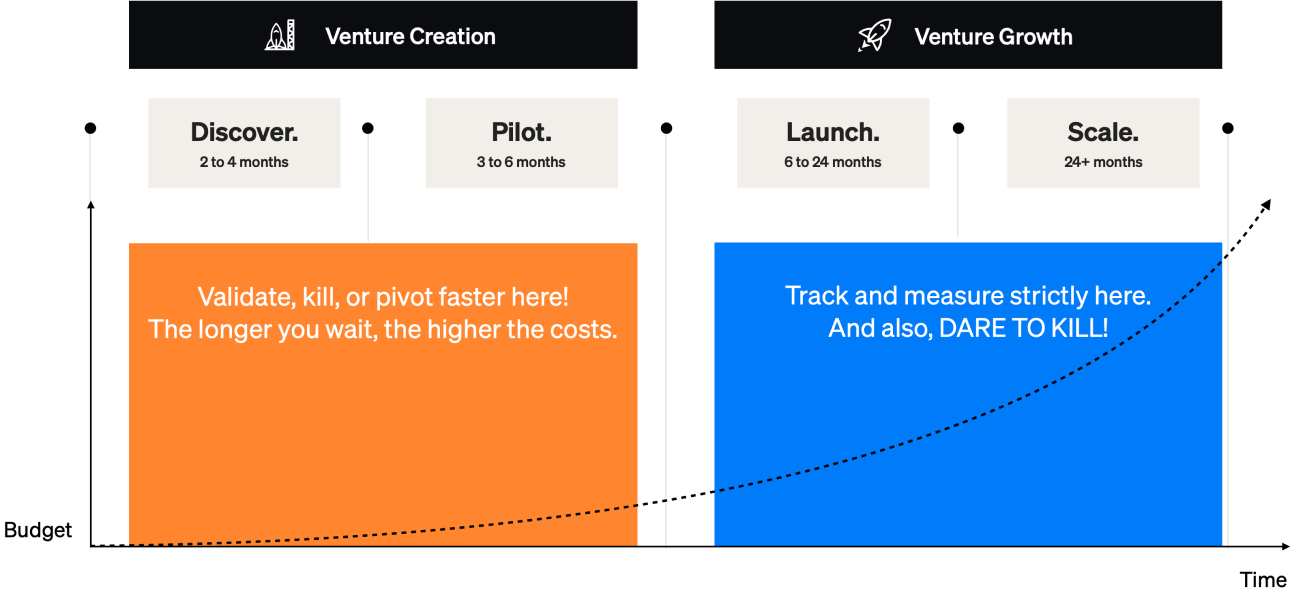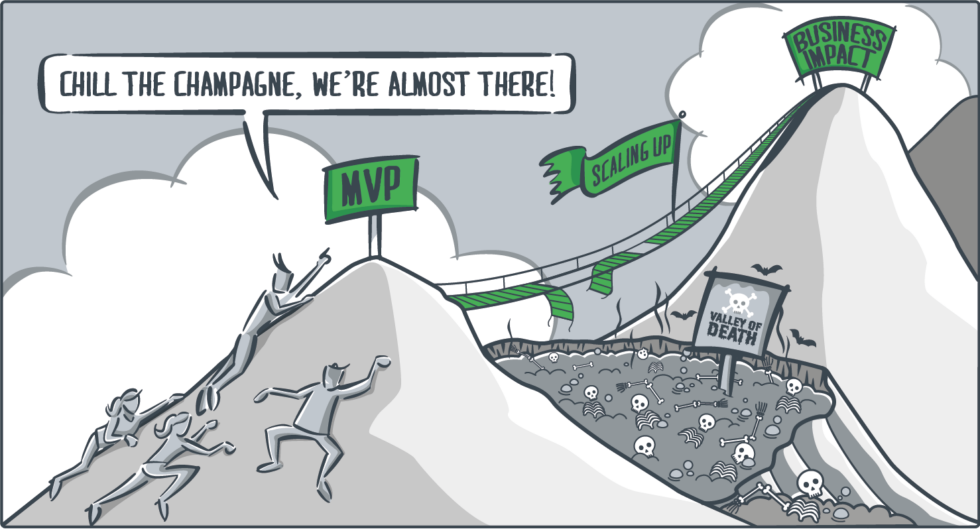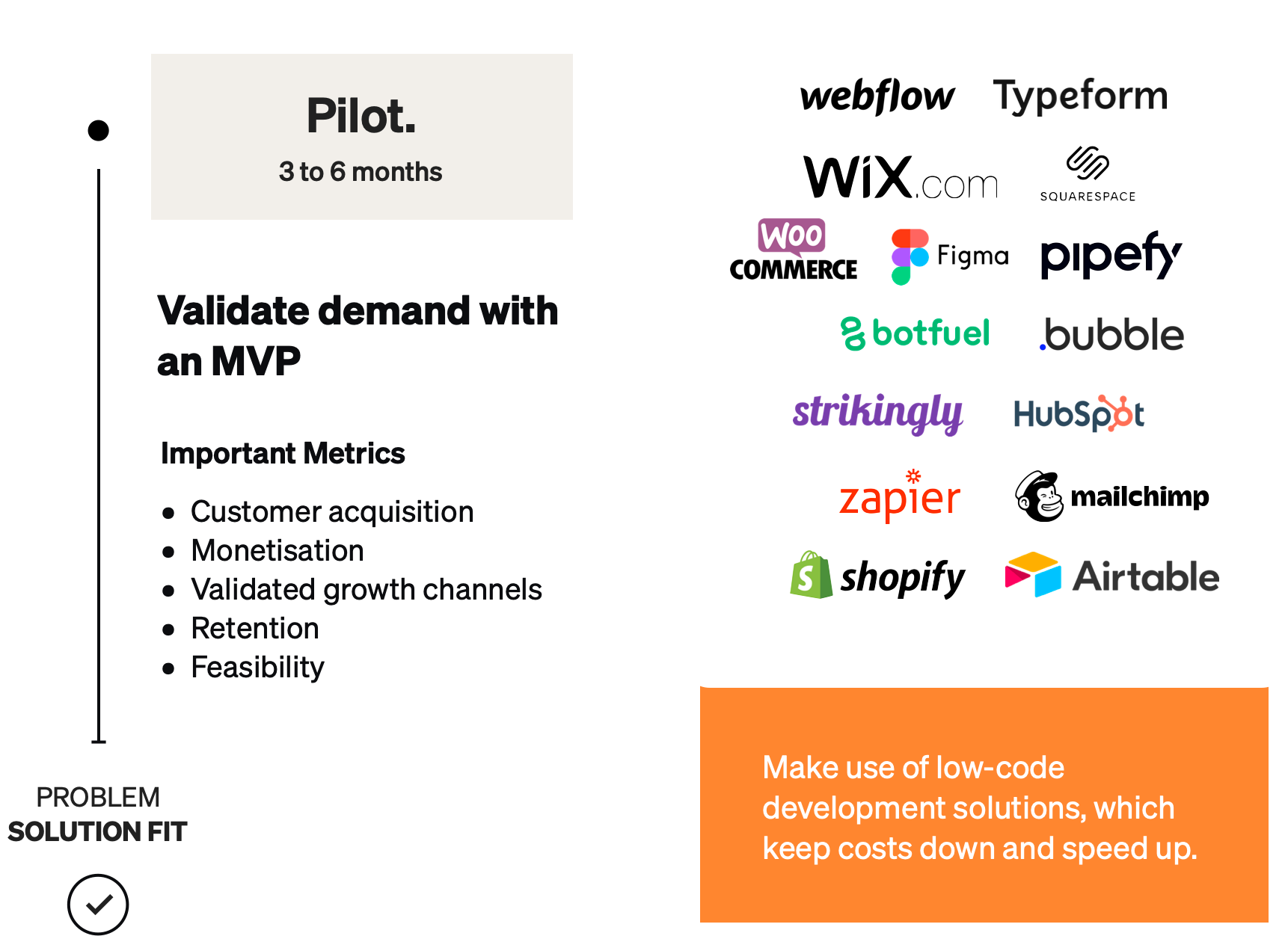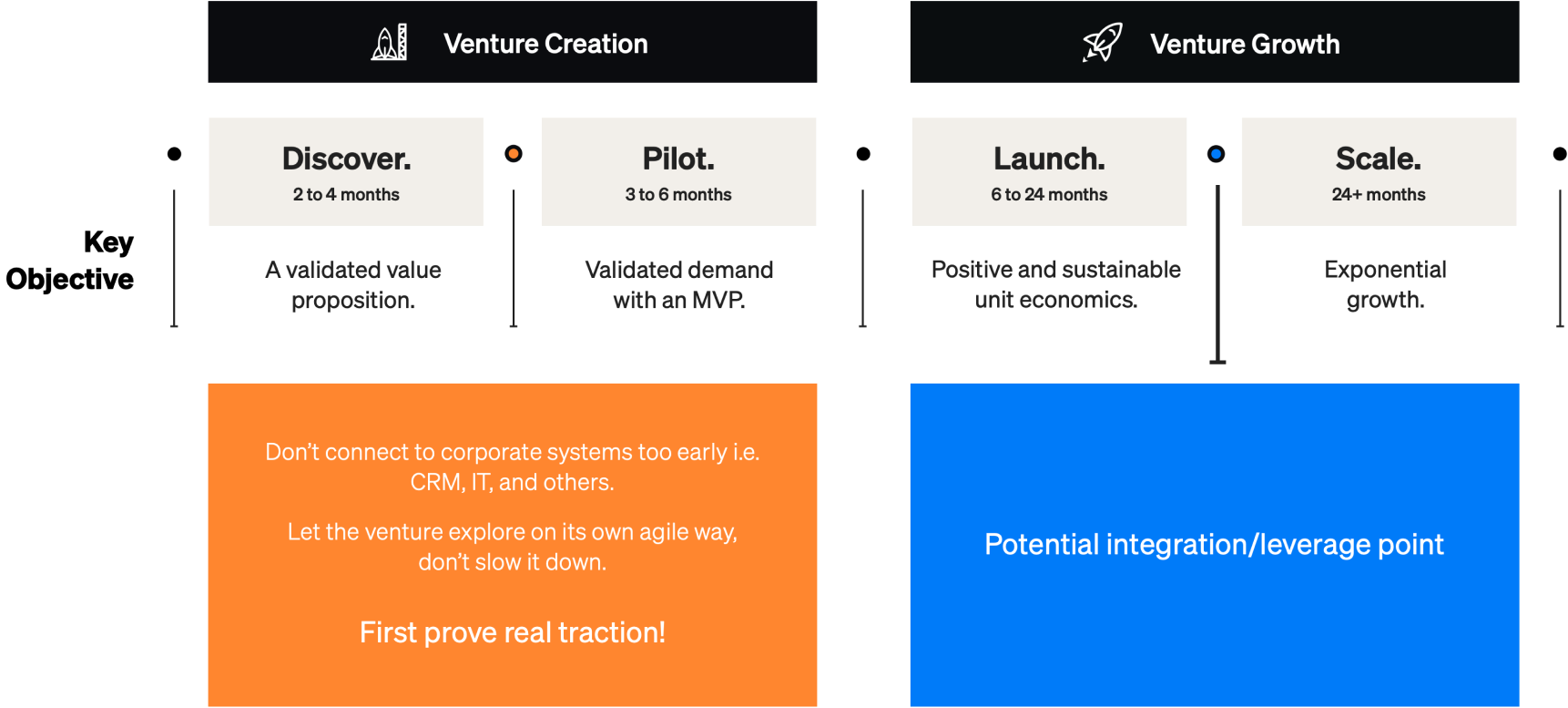Key takeaways
Bringing new ventures to life is an exhilarating process, but it’s no easy task. It requires tireless creativity, meticulous validation, and stellar pitching skills. All in the hopes of conquering that final growth milestone: The scaling phase.
The problem is that too many promising corporate ventures end up with less than stellar results:
- Only 22% of ventures launched in the past ten years have successfully scaled.
- 54% of executives believe scaling is the number one innovation problem.
- Only 10% of corporate digital innovation units manage to scale their ideas.
The good news is that by taking the right action at different critical stages in the lifecycle of your venture, you can mitigate the challenges, beat the odds and create a framework for long-term venture growth.
To help you achieve that goal, we’ve leveraged the insights gathered from over 200 innovation tracks to create Bundl’s four rules for scaling success. Read on to find out how they can help you grow your business and avoid some of the common mistakes that might undermine your scaling efforts.
Explore our global list of corporate ventures with over 200 examples you can sort by business model, industry, parent company and more!
Rule 1. Kill or pivot fast and early, based on data.
New business concepts (e.g. B2B, B2C or D2C) will always have unpredictable elements and, moving forward, will inevitably involve some degree of risk. The closer you get to the scale phase, the higher that risk gets (because by that time, you’ve already invested quite a bit of time, effort and resources). That’s why here at Bundl, our motto is: test fast, test early and test often.
This is especially crucial during the early stages of your venture when the costs are still relatively low. During this time, you can use various lean validation techniques to test your concept and make informed decisions on whether to:
- Move forward - When you have conclusive proof of concept.
- Pivot - When there is some value in the idea, but it needs tweaking.
- Kill - When the data shows the concept is a “no-go”, and it’s time to change tack.
This is not to say that the validation process should end there - in fact, it’s quite the opposite. Validation should be constant throughout the lifecycle of your venture. To get a better idea of how this works in practice, check out the image below:

Smoke testing, surveys, and online ads are all great ways to get started, enabling you to:
- Get the answers you need fast
- Operate on a lean budget
- Adapt concepts based on real customer feedback
Rule 2. Connect with corporate strategy and available assets.
It’s not uncommon for ventures that are ready to scale to run into one of the following bottlenecks:
- Not having the corporate leverage to scale further
- Not being aligned with its parent company’s broader strategic purpose
This is deeply problematic because no matter how promising your concept, without the right corporate backing and resources, it will most likely end up in the venture “valley of death”. A dynamic aptly described by Frank Mattes in his book, “The lean scaleup”.

The best way to avoid this rookie mistake is keeping a laser focus on your broader corporate strategy and available corporate assets - factoring both into every decision you make. How? By mapping them both and revisiting that map throughout the lifecycle of your venture.
Here’s what that map could look like (each “VP” on the map represents a value proposition):

This will give you a visual representation of how far or how close your value propositions are from the broader corporate strategy and how efficiently they make use of your available assets.
Rule 3. Do not skip the pilot!
Our corporate landscape is moving faster and is more competitive than ever before. So it’s understandable that companies want to get their new offerings out and on the market as quickly as possible. In essence, it’s the right mindset, but cutting too many corners can end up backfiring, costing way too much for way too little return. Case in point: the pilot.
Yes, doing a proper pilot with an MVP and comprehensive validation can add anywhere from three to six months to your timeline, but consider the alternative. A scenario in which you pump out endless amounts of time, effort, funding and resources only to end up with a product or service that:
- Has no market (nobody wants to buy it)
- Is not profitable or has too small a profit margin
- Isn’t feasible to produce
- Might become irrelevant in the near future
Without a proper pilot you’re basically taking a shot in the dark and hoping to hit your target. Although you might get lucky with a winning concept, it’s always better to cover your bases and develop products and services based on a proven concept. That means developing an MVP, testing it and leveraging that data to take your offering to even greater heights.

Rule 4. Time your integration and leverage your assets wisely.
Having access to the right corporate assets (e.g. networks, talent, expertise, funding, infrastructure, etc.) can give you a significant competitive advantage. These assets are, in essence, the lifeblood of your venture, providing valuable support and strengthening it throughout its lifecycle.
However, like most assets, it’s important to use them wisely and at the right time, making full use of their potential and not burning them out too early in the process. A good rule of thumb is to stay lean during the venture creation process, using only the resources that will further your mission to get your definitive “proof of concept”. Once you have that, you can bring out the “big guns” when you’ll need them the most, leveraging your parent company’s brand, loyal customer base and reach during the launch and scale phases.

Final thoughts.
There’s no one secret to successfully scaling a venture. It’s a long process that takes commitment, attention to detail and, above all else, constant testing and validation from start to finish.
However, following the four rules described above can help you avoid some of the pitfalls commonly responsible for taking down promising ventures during their scale phase. Providing you with a solid, data-driven and user-tested foundation strong enough to take you beyond the scale phase and - enabling you to make real business impact.
_____
Are you a corporate innovator looking to scale your venture? We can help you hit that next growth milestone, leveraging your unique corporate assets to turn your venture into a valuable group revenue contributor.
Scaling corporate ventures: the foundations.
Discover and understand the critical actions needed on the venture journey to scale successfully.








